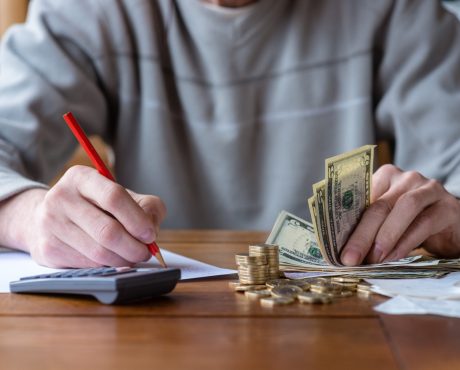Looking for Yield in a Challenging Environment? Read this
For income investors, the banking industry has always been an interesting place. America is never short of dividend-paying financial institutions, but the most established ones don’t really yield that much. For instance, JPMorgan Chase & Co. (NYSE:JPM) has a dividend yield of 3.5%, Bank of America Corp (NYSE:BAC) pays 2.7%, and Citigroup Inc (NYSE:C) yields 3.9% at the time of this writing.
The payouts are not carved in stone, either. In July, Wells Fargo & Co (NYSE:WFC) slashed its quarterly dividend rate from $0.51 per share to $0.10 per share, marking a cut of 80%. (Source: “Wells Fargo & Company Announces Common Stock Dividend,” Wells Fargo & Co, July 28, 2020.)
In this kind of environment, it might be worthwhile for yield hunters to check out an “alternative bank” that goes by the name of Gladstone Capital Corporation (NASDAQ:GLAD).
Gladstone Capital Corporation is a business development company (BDC) headquartered in McLean, Virginia. I call it an “alternative bank” because it is in the lending business, but focuses specifically on serving lower-middle market businesses in the United States.
A typical borrower would be a company with annual operating cash flow of around $3.0 to $15.0 million, and the loans usually range from $8.0 to $30.0 million. (Source: “Financial and Portfolio Overview for the Fiscal Quarter Ended March 31, 2020,” Gladstone Capital Corporation, last accessed August 14, 2020.)
In the company’s own words, its objective is “delivering distributions to our stockholders.” And by looking at the yield, distributions are indeed the main appeal of GLAD stock. Right now, the company has a monthly dividend rate of $0.065 per share, which comes out to a staggering annual yield of 10.2%.
That’s right, this “alternative bank” not only offers a substantially higher yield than the traditional banks, but also pays investors more frequently (as most banks distribute on a quarterly basis).
One of the reasons behind Gladstone Capital stock’s massive payout is that BDCs operate as regulated investment companies for tax purposes: as long as a BDC distributes at least 90% of its profits to investors, it can avoid paying corporate income taxes.
The business is quite lucrative, too. At the end of June 2020, the weighted average yield on Gladstone Capital’s interest-bearing investments stood at 10.9%. (Source: “Gladstone Capital Corporation Reports Financial Results for its Third Quarter Ended June 30, 2020,” Gladstone Capital Corporation, July 29, 2020.)
Now, as is the case with most ultra-high yielders, the biggest concern for GLAD stock these days is how the BDC would perform in the challenging economic environment under the COVID-19 pandemic.
Well, as it turns out, in the third quarter of GLAD’s fiscal-year 2020, which ended June 30, the company had no payment defaults. Moreover, non-accrual investments (loans that are not generating their stated interest rates due to non-payment by the borrower) actually declined to 1.5% of the portfolio at fair value.
At the same time, the BDC’s net asset value rose four percent from $6.99 per share at the end of March to $7.27 as of June 30.
Looking at the financials, we see that Gladstone Capital Corporation earned net investment income of $0.195 per share in the June quarter. Considering that the company paid three monthly dividends totaling $0.195 per share for the quarter, it managed to cover its payout, but did not leave any margin for error.
At this point I should point out that a BDC’s payouts are not carved in stone. In the first three months of this year, GLAD stock was paying monthly dividends of $0.07 per share. So the current monthly payout level of $0.065 per share—while contributing to a very attractive annual yield—is the result of a distribution cut. (Source: “Distribution History and Tax Information,” Gladstone Capital Corporation, last accessed August 14, 2020.)
As you’d expect, there is plenty of uncertainty ahead. The company’s Chief Executive Officer David Gladstone said in July that “forecasting today is very difficult because quite simply, we have no way of knowing which way the state and local governments, as well as the national governments are going to do to what’s going on.” (Source: “Gladstone Capital (GLAD) CEO David Gladstone on Q3 2020 Results – Earnings Call Transcript,” Seeking Alpha, July 30, 2020.)
However, I should point out that Gladstone Capital’s board of directors have already declared the monthly dividend for September, maintaining the payout level at $0.065 per share. The board will be having another meeting in October to determine the amount of dividends to be paid for further periods.
Bottom Line on Gladstone Capital Corporation
Generally speaking, the dividends from double-digit yielders are usually not as safe as the payouts from lower-yielding blue-chip stocks. And as a risk-averse income investor, I would like to see stronger dividend coverage from Gladstone Capital Corporation so there would be some margin for safety.
However, for those who understand the underlying risks of Gladstone Capital stock, a 10.2% yield—combined with a monthly distribution schedule—is very hard to ignore in today’s low-yield environment.
